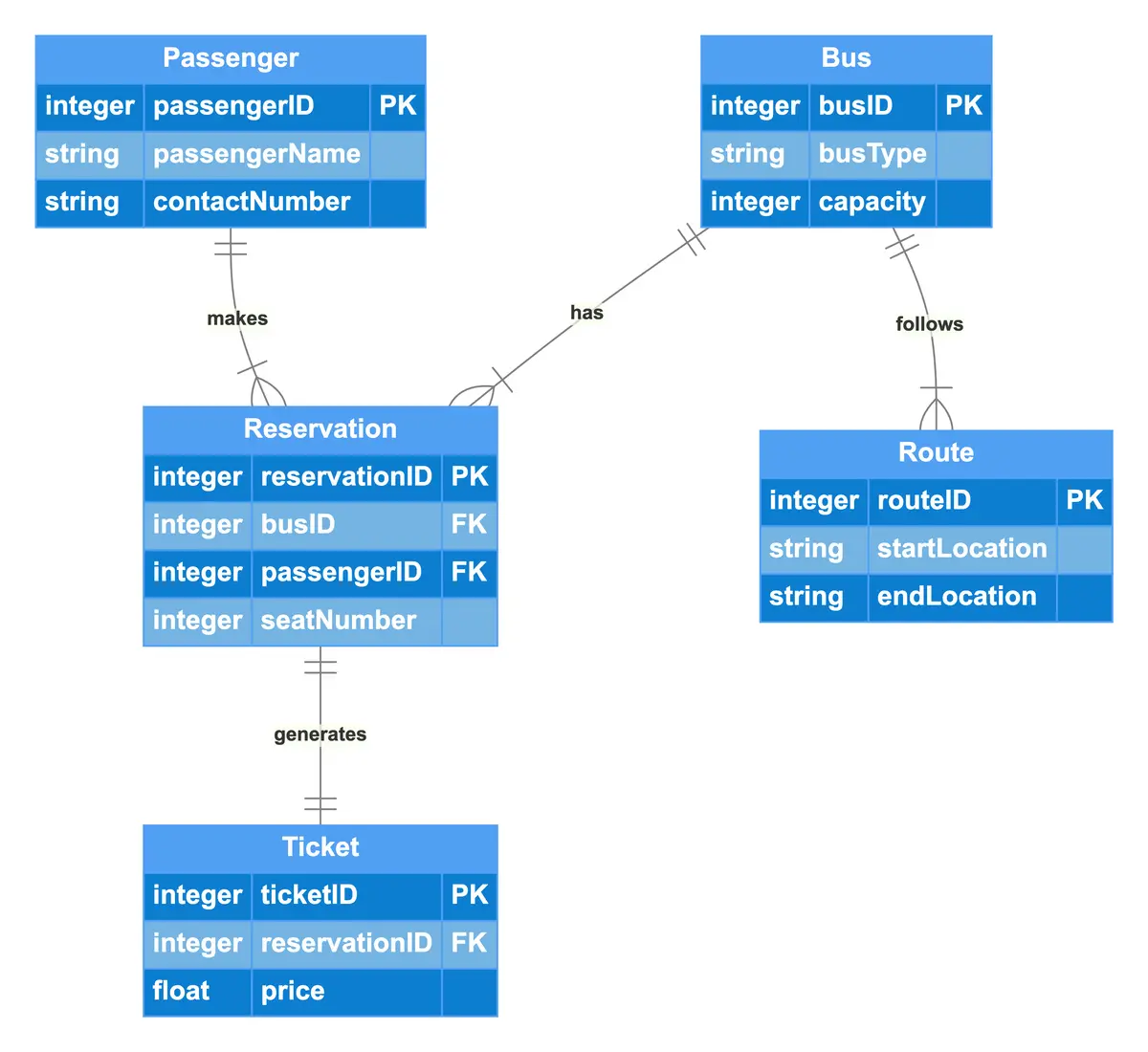This ER diagram illustrates a Bus Reservation System, comprising entities such as Bus, Reservation, Passenger, Route, and Ticket. Each Bus has a unique identifier and attributes including type and capacity. Passengers, identified by a unique ID, can make multiple Reservations, each linked to a specific Bus and assigned a seat number. Each Reservation generates a Ticket, which includes a unique ID and price. Additionally, each Bus follows one or more Routes, which are defined by a starting and ending location. The relationships among these entities highlight how passengers reserve seats on buses and how those reservations are connected to ticketing and routing.

Edit this diagram in Gleek
Bus reservation system diagram code in Gleek
Bus
integer busID PK
string busType
integer capacity
Reservation
integer reservationID PK
integer busID FK
integer passengerID FK
integer seatNumber
Passenger
integer passengerID PK
string passengerName
string contactNumber
Route
integer routeID PK
string startLocation
string endLocation
Ticket
integer ticketID PK
integer reservationID FK
float price
Bus {1}-has-{1..n} Reservation
Passenger {1}-makes-{1..n} Reservation
Reservation {1}-generates-{1} Ticket
Bus {1}-follows-{1..n} Route
About ER diagrams
We often make an entity-relationship (ER) diagram, ERD, or entity-relationship model, in the early stages of designing a database. An ERD is perfect for quickly sketching out the elements needed in the system. The ERD explains how the elements interact. ER diagrams can be shared with colleagues. Their simplicity makes them ideal even for non-technical stakeholders.
Similar ER diagram examples
Online store entity-relationship diagram
Banking system entity-relationship diagram
Travel management system Er diagram
Online doctor appointment system ER diagram
Library management system ER diagram with Chen notation